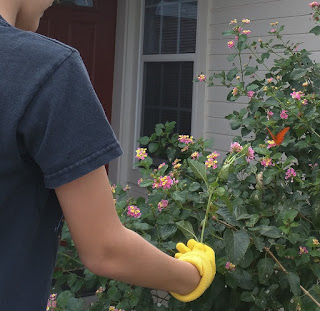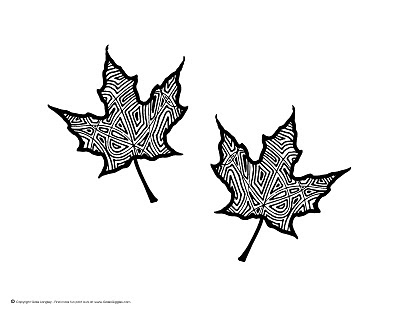Post contains some affiliate links, through which I can earn commission.
Mostly for books, which I suggest looking for at your local library.
This section is about the Nile river, and about the king who united upper and lower Egypt into one Nation. Because my son has a short attention span, we broke up the section into two parts to shorten it--and to shorten it a little more I crossed out a few lines here in there (this was one of our "Readers Digest Condensed Chapters *wink*). We also did what we usually do--stopped and asked questions during the text and looked at pictures from other sources which we read.
We had a lot of resources for this and didn't use all of them, but I'll share some good resources we found to add visuals below. Finding books on Egypt than contain good illustrations of the things mentioned in this chapter is EASY. If you don't have the books mentioned below, you should be able to find something else in your local library that works.
DAY 1 (Paragraphs 1-4)
Farming on the Nile
Before Reading
Before starting the reading we looked at some maps of Egypt and then found where it was on a world map.
Paragraph 1 -2
These paragraphs can be supplemented with a map from the activity book, but we had a full color illustrated map I thought he'd enjoy more (from the
Usborn Time Traveler), so in stead of coloring the map, I had my son find the Nile Delta on that picture.
I like the colored map too because it showed a green area around the Nile, and pictures of desert outside that area, so I could ask my son where people could live and farm. We also looked at an
aerial picture of Egypt that showed how green that area around the Nile actually was. Seeing real pictures really brings home the difference between the area near the Nile, and the desert surrounding it. (More map/picture suggestions below)
Also, this is one of the places where I edited out a few lines (about the word Delta being from the Greek letter "D") to make it shorter for his attention span.
Suggested Online Pictures/Maps of the Nile
Aerial Nile Photo - Delta (what we used)
Aerial Nile Photo - Long
Illustrated Map
Egypt With Cartoon Landmarks
Books With Great Nile Illustrations
The Usborn Time Traveler
Make It Work: Ancient Egypt
Egypt Insiders by Joyce Tyldesley**
**You can preview the illustration of the Nile in this book using the "Look Inside" feature on Amazon
Paragraph 3 - 4
Here is a good topographical map that shows the mountains that feed the Nile, as mentioned in paragraph 3.
I found some books with some GREAT illustrations of Egyptian farming mentioned in paragraph 4. Here is the one we used...
But I wanted to share some of my other favorite illustrations from books we found at our library too...
This book uses dioramas to illustrate (and is full of crafts kids can do). I like how this book showed the steps in farming the land, and talked about the three Egyptian seasons.
Pyramids
This book on pyramids had a nice picture with a Nile map AND farming illustrations, so if you wanted to cut down on the amount of resources you used, you could just use this one for both.
Don't have any of these books at your library? There's a
sample of Horrible Histories magazine that features a great Nile farming illustration (just scroll to pg 14-15).
ACTIVITIES
Explore a Section of the Nile River
On
Round-Me you can scroll around explore 360 degree views of various places around the world.
Click here to explore the banks of the Nile River.
Silt Demonstration
This activity shows how flooding brought silt onto the Nile banks.
It's not amazingly exciting, but it does demonstrate the concept and my son enjoyed pouring the water.
Supplies
bowl
white piece of paper
baking pan or dish (to catch water)
dirt
water
Instructions
- Place a bowl on a piece of white paper on a larger ban, dish, or lipped plate. Fill up a small bowl half way with water, and add a little dirt. Let the dirt settle.
- Pour in water until the dish overflows. Note the pieces of dirt on the white paper....in the same way the Nile deposits silt on the area around it when it floods.
Egyptian Meal
You can have an Egyptian meal, like we did at our co-op. You can find a list of recipes and foods they had
here.
A fun thing to talk about is how the foods they ate may have tasted
different, because years of farmers choosing seeds from the tastiest
plants changed what the plants looked and tasted like. For instance, initially no one ate the
fruit of the watermelon, but would only eat the seeds...so historians
believe that watermelon originally didn't taste sweet.
More Activities
- Make a Shaduf - Egyptians used shadufs too, so if you haven't already made a shaduf for Chapter 1 (where they describe it) that could be fit in here.
- Plant and Egyptian Garden - Plant a garden with food crops like the Egyptians planted (cucumbers, onions, garlic, raddish, peas, etc. See full list here.).
- Learn about Egyptian Daily Life - A great follow-up on this section is learning about daily life in Egypt. I have a free Egypt Guide* with lots of pictures related to daily life in Egypt, including a comparison of a common Egyptian home vs. the home of an Egyptian elite, and a fun activity might be to create and imaginary Egyptian character and draw a room in their home. (*The guide was originally for VBS volunteers at my church when we did a living history style VBS program.)
- Do Lapbook activities (scroll down for suggestions at the bottom of this page)
- Make Egypt Cookies showing the Nile River and surrounding desert.
Supplemental Reading/Extension For Older Kids
Nile River Unit - Dr. Dave's Science
This
very readable printable unit on the Nile River by Dr. Dave's science
makes for great extension reading to bring in some science (suggested
for ages 4th - 7th, but I think a lot of younger homeschoolers might
enjoy it too.)
The free sample of the first 10 pages covers the Nile ecosystem and flooding, and the
full package ($3) goes into more detail on about Egyptian farming methods, food, papyrus, and the damning of modern Egypt.
DAY 2 (Paragraphs 5-9)
Upper and Lower Egypt Become One
Note that the paragraph numbers are different for the Revised and Original versions.
Paragraphs 5 - 7 (Original: 5)
For these paragraphs we again looked at the maps we had of Egypt and Africa, and pointed out all the things they were talking about.
In the Revised version they explained why the names for "Upper and Lower" Egypt make sense even though it looks backwards on our maps (because in stead of "north" and "south" they thought of things in terms of the way the river flowed--"up river" or "down river"). We turned our map upside down when they mention that was how the Egyptians saw the world. After this section I stopped to ask which part was Upper and Lower Egypt and why they were called that before moving on.
Paragraphs 8 - 9 (Original: 5-6)
We continued to use the maps for this section. We also looked at the single and double crowns in the page about the Pharoah in the
Usborn Time Traveler (you could find pictures of these crowns in almost any picture book about Egypt, or at the links below).
DOUBLE CROWN COLORING PAGES/GRAPHICS
Crown Image 1 - Black and White
Crown Image 2 - Black and White
Crown Image 3 - Colored
History Pockets has a great map showing all three crowns (pg 37)
ACTIVITIES
We didn't do a special activity for this section, but here are some ideas for ones you could do.
Egyptian Double Crown
Narmer Puppet
- Note, this is in the free sample pages. Find a link to them under the picture of the book.
Egypt Lapbooks
Lapbooks can be a great way to
supplement Story of the World. Often they are done with file folders. I actually like using a small
blank-book in stead of the traditional folder method, and adding items
from various lapbooks as we reach those topics in SOTW. You can make
your own books with folded paper and staples or use inexpensive blank
books
like these (I also often see square blank books 5 for $1 in the Dollar Section of Target).
Free Egypt Lapbook 1
This one has a nice map of the Nile with an Egyptian border, graphics of King Narmer and the double crown, among other things.
Free Egypt Lapbook 2 - Homeschool Share
This lapbook has a lift the flap Nile item that would be a good fit for this chapter.
History Pockets
This
is a great resource for using while studying Egypt. Related to this
chapter it has a map of Egypt illustrated with kings wearing the crowns
of upper and lower Egypt, and excellent cut and paste activities for
life on the Nile. I was lucky to find this used at a local homeschool
sale.




























